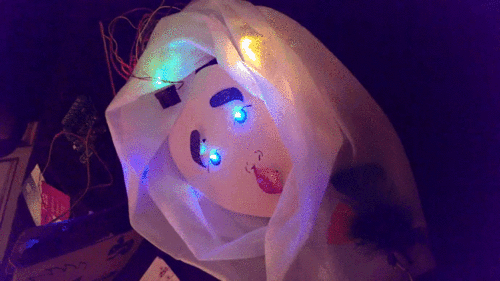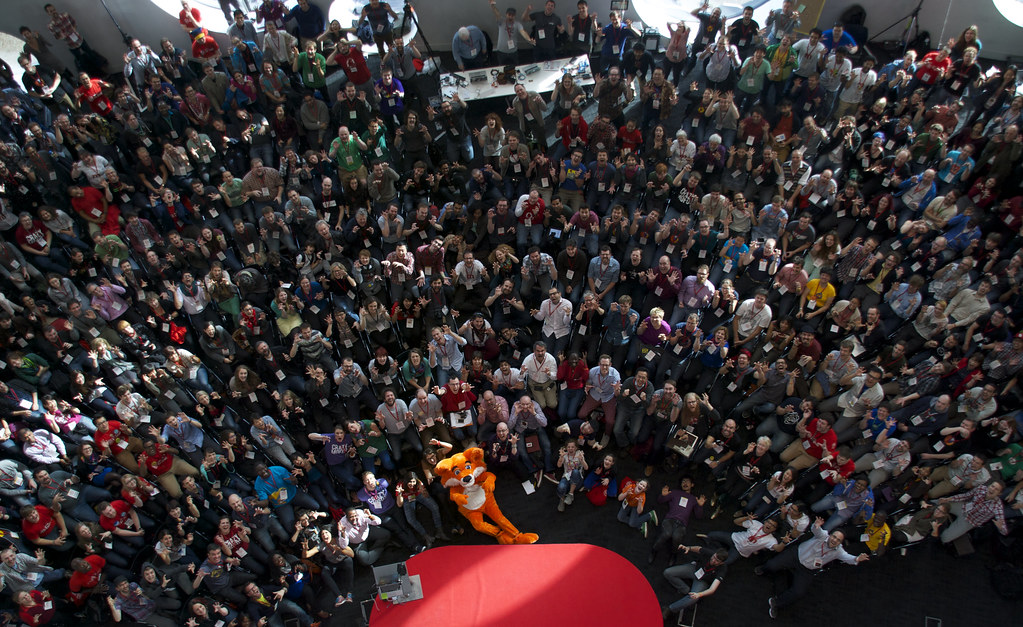This is the second in a series of blog posts where Mozilla’s Senior Director of the Webmaker Community details plans for a global network of Hive activity. The first post is here.
This was originally posted on the Hive NYC blog.
Over the last two years MacArthur and Mozilla have grown Hive NYC and Hive Chicago, helped on-board Hive Pittsburgh and Hive Toronto and responded to a growing chorus of communities eager to incorporate Hive values, ideas and platforms, or as we have dubbed it, “Hivey-ness.” As a result, we’ve developed a three-tiered engagement ladder, outlining ways to contribute to Hive as well as the path towards creating and sustaining a Hive Learning Network.
Tier 1: Hive Learning Events
These are learning gatherings that bring network practice and connected learning principles to life for an inter-generational audience. Examples include Pop-Ups, Hack Jams, media production sessions, Maker Faires and other events. We brand these events in two ways:
-
Hive Pop-Ups have an intentional program design towards fostering a “Hanging Out, Messaging Around, Geeking Out” (HOMAGO) experience. For more on HOMAGO check out this handbook written by the Yollocalli Arts Center and Hive Chicago. At these events, multiple organizations come together with some of their best programs and deliver activities via learning stations tailored towards three levels of users:
-
Those who sample (Hang Out) by searching the room for what interests them most
-
Those who lightly experience all the activities offered (Messing Around)
- A smaller but focused group who lock into one activity for the duration of the event (Geeking Out)
-
Participating educators get to both contribute to and observe what it’s like to see youth self-direct their learning and design their own experience in a networked space. Often the question, “Why Hive?” is better answered after seeing a Pop-Up in action: adults see youth interacting and learning with peers, remix and re-interpret their programs, become part of the energy in the room, and perhaps most importantly, see youth travel from different activities/interactions guiding their own path through the controlled chaos. We have distilled the Hive Pop-Up into a Webmaker Teaching Kit and this video details the Brooklyn Public Library Storymakers Maker Party/Hive Pop-Up.
-
Maker Party is the second event category, based on Mozilla’s global campaign to engage, excite and educate people about a production-based culture. Maker Party seeks to broaden access and equity to both digital as well as analog practices. Maker Parties are used to grow the community of people aware of connected learning and as cultivation strategy for new Hive Learning Communities.
Recently the Hive Research Lab has been studying Hive Events (Pop-Ups, Hack Jams and Maker Parties) through the lens of their two primary research areas: how Hive can foster Youth Interest-Driven Pathways and how it can act as effective infrastructure for Networked Innovation. Based on early fieldwork, Hive Research Lab has come up with design suggestions for how educators can more effectively use these events to reach these goals, ones that relate to outcomes for whole networks, member organizations and network-affiliated youth.
These events have been catalysts in helping new Hive communities emerge and we’ll share some specific examples in an upcoming post.
Tier 2: Hive Learning Communities (HLC)
Hive Learning Communities begin to use the connected learning principles and the practices of Hive to operationalize a learning network. They draw heavily from the experience of existing Hive Learning Networks whose leaders function as consultants and mentors sharing information about structure, program design and strategy. Local facilitators then adapt tools, practices, frameworks to their local contexts. They are free to self-identify themselves as Hive and use the branding assets and developmental resources that are openly networked.
Specific characteristics could Include:
-
educator meet-ups
-
recruitment and curation of affiliated organizations
-
wider participation and implementation of communication networks
The Hive concept has really developed into a grassroots movement with Hive Learning Communities forming around the globe. Current examples include Hive India, Hive Bay Area, Hive Berlin and others.
Tier 3: Hive Learning Networks (HLN)
Hive Learning Networks are city-wide vehicles for implementing and spreading connected learning ideas, tools, practices and values. These networks are fully operationalized with a staff, sources of funding, ways to seed innovation projects and a system for convening its membership. They accept the responsibility to be engaged in the stewardship of Hive Global. New Hive Learning Networks will be admitted through a review process of the Hive Global stewarding body, MacArthur, Mozilla and a panel of independent stakeholders.
The minimum requirements for Hive Learning Networks are:
-
Demonstrated alignment and programmatic commitment to connected learning values and principles
-
At least one dedicated, full-time staff member
-
An operational budget of at least $150K/year
-
A grantmaking apparatus that seeds no less than $15K into ecosystem
-
Participation in Hive Global stewardship beyond home city
Specific characteristics of the networks include:
-
Demonstrated commitment to providing equitable, accessible connected learning and web literacy opportunities to youth
-
A laboratory-approach
-
Cross-disciplinary collaboration
-
Incubation of inter-connected learning experiences for youth
From our experience consulting and participating in nascent communities, we know the components of successful Hives share common categories and characteristics. We recently circulated a collaborative document to surface a common set of self-emergent values, and here are just a few:
-
encompass innovative and transformative learning experiences
-
understand community needs and bridge gaps in local education
-
outcome-oriented
-
youth interest-driven
- embody experimental, iterative, and open source practices
We are currently working in the open towards the better articulation, operation and adaptation of these three tiers as a strategy to establish Hive practices as a key driver of the spread and scale of connected learning. We’ll continue to share more plans, details and resources in the coming weeks, and we’re also interested in your feedback. If you’re already working towards building a Hive in your community, or have been considering it, we’d love to know what resonates with you, or what questions you have regarding information we’ve shared so far or even specific details to help you get started. Feel free to comment below or reach out to me directly via email.




















